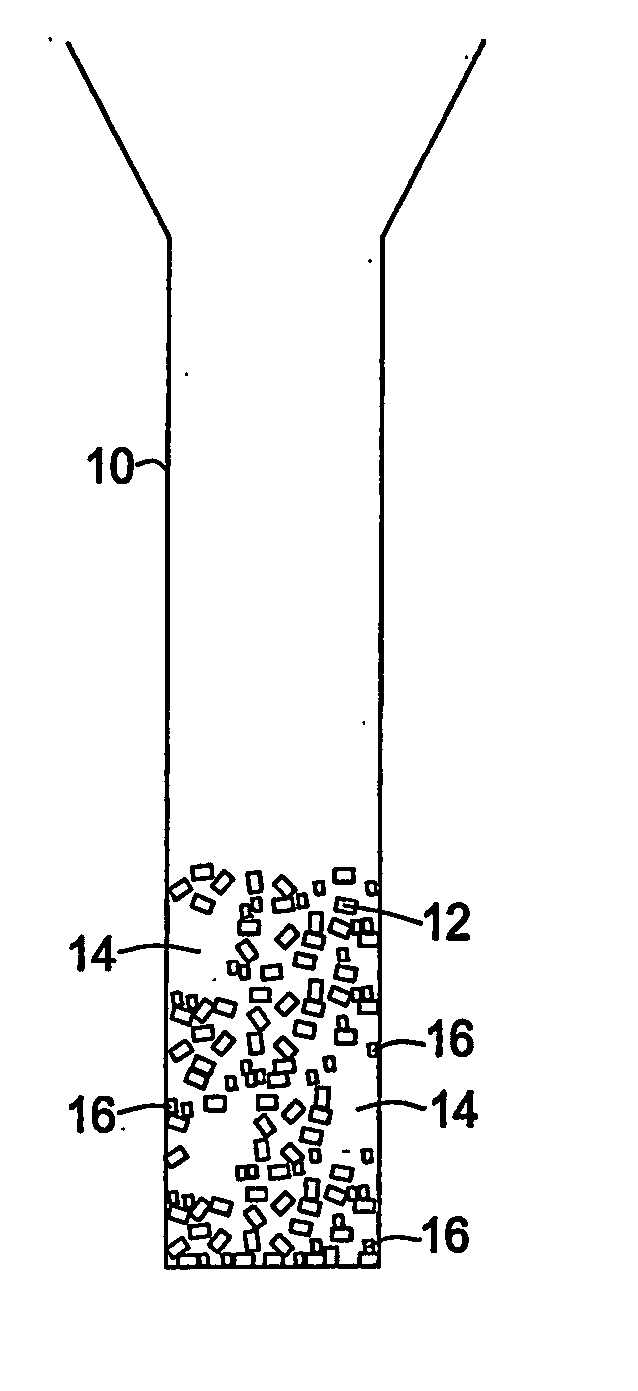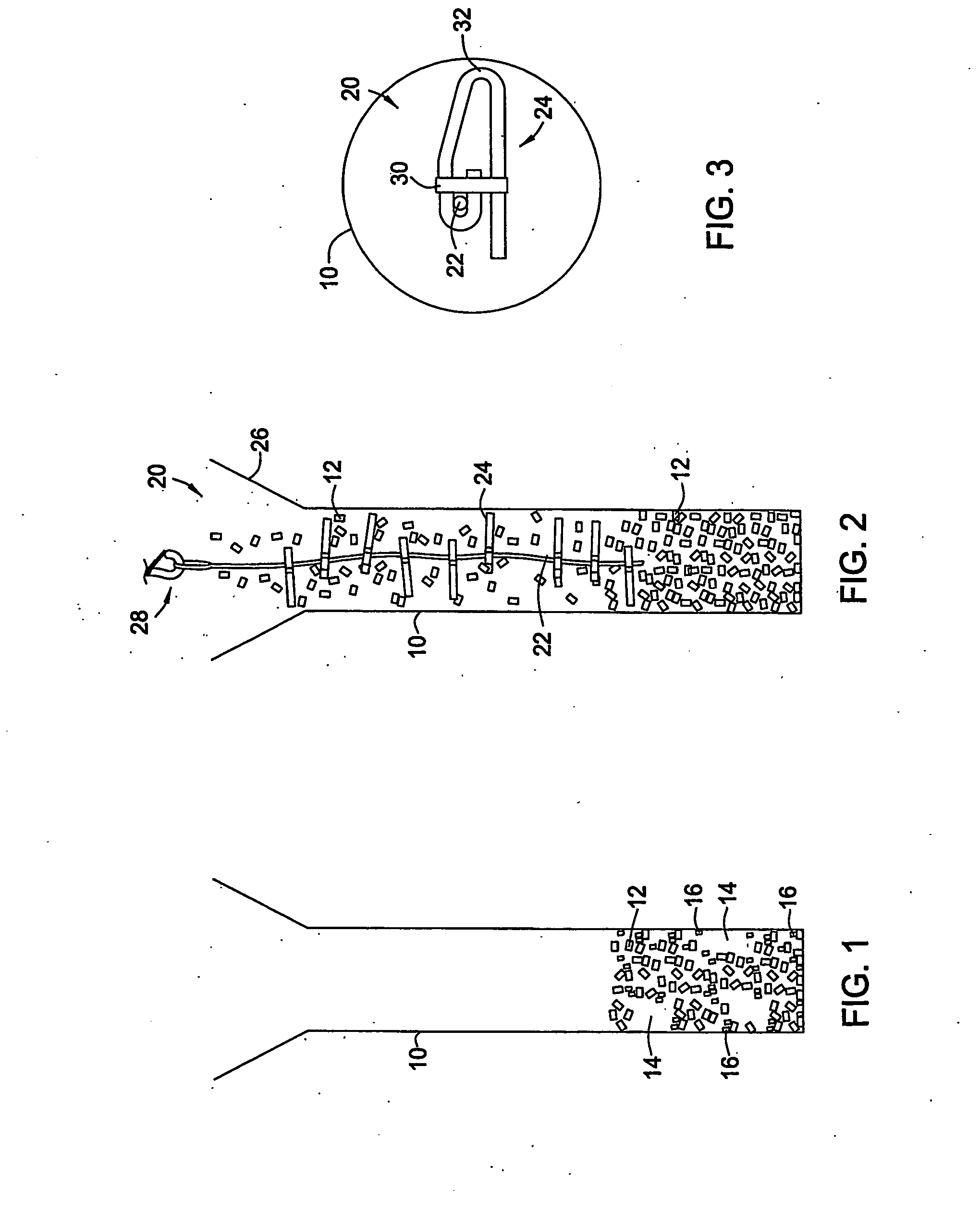Method and apparatus for loading catalyst
a technology of catalyst and filling tube, which is applied in the direction of transportation and packaging, packaging goods type, bulk chemical production, etc., can solve the problems of less than optimal catalyst density, voids in the catalyst fill can easily form, and catalyst particles can fracture or crush, so as to reduce the falling velocity of the catalyst and soften the catalyst. the effect of the catalys
- Summary
- Abstract
- Description
- Claims
- Application Information
AI Technical Summary
Benefits of technology
Problems solved by technology
Method used
Image
Examples
Embodiment Construction
[0014]FIG. 1 shows a tube 10 such as a catalyst tube of a reactor. As illustrated, filling the tube 10 by allowing the particles 12 to fall directly down the tube produces voids 14 and broken particles 16.
[0015]FIG. 2 shows particles 12 such as catalyst falling into a tube 10 that includes a loading tool 20. The loading tool 20 comprises a center member 22 such as a wire, a chain, a rod, or the like and a plurality of damper members 24 substantially transverse and axially arranged on the center member 22 to provide substantially circumferential coverage along a longitudinal length of the tube 10. The center member 22 can be stiff or flexible. The distance between damper members 24 on the center member 22 can be substantially equal or can vary. The plurality of damper members 24 reduces the falling velocity of the particles 12 and diverts the particles from falling in straight downward paths. Since the damper members 24 do not occupy a substantial portion of the cross section of the...
PUM
| Property | Measurement | Unit |
|---|---|---|
| diameter | aaaaa | aaaaa |
| length | aaaaa | aaaaa |
| density | aaaaa | aaaaa |
Abstract
Description
Claims
Application Information
 Login to View More
Login to View More - R&D
- Intellectual Property
- Life Sciences
- Materials
- Tech Scout
- Unparalleled Data Quality
- Higher Quality Content
- 60% Fewer Hallucinations
Browse by: Latest US Patents, China's latest patents, Technical Efficacy Thesaurus, Application Domain, Technology Topic, Popular Technical Reports.
© 2025 PatSnap. All rights reserved.Legal|Privacy policy|Modern Slavery Act Transparency Statement|Sitemap|About US| Contact US: help@patsnap.com


